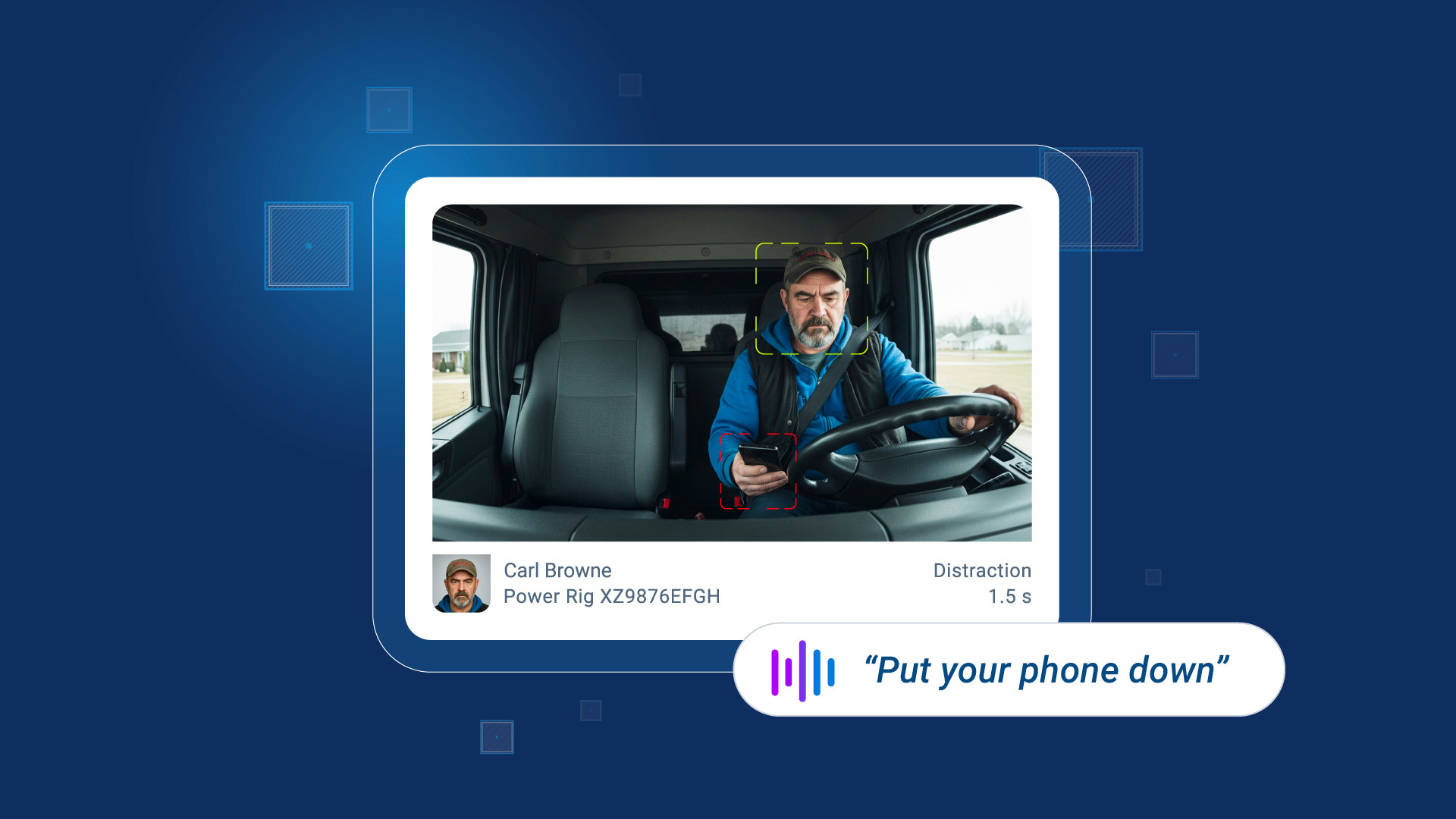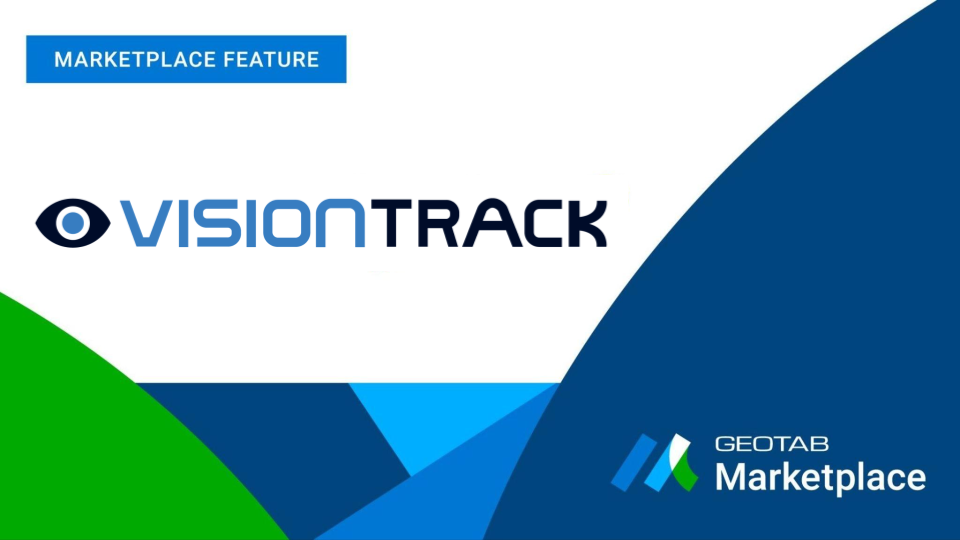
Nearly 66% of traffic fatalities are caused by aggressive driving, a striking fact that underscores the urgent need for proactive safety measures in government fleets. With the advent of AI and predictive analytics, fleet managers now have powerful tools to not only understand past driver behavior but to anticipate and mitigate future risks. This blog post explores how AI is revolutionizing fleet safety, empowering government agencies to build more robust and proactive safety programs.
Prior to the advent of artificial intelligence (AI) and predictive analytics, the only option that government fleets had to build their fleet safety programs on was historical data. Today’s top-tier telematics platforms leverage historical driver behavior data, AI-powered analytics and AI-powered predictive insights. All of these features work together to help your fleet reduce its collision rate and limit liability. The fact that nuclear verdicts are up 400% since 2013 makes it crucial for your agency to protect itself and your drivers using every capability available.
As the saying goes, “you can’t drive forward by only looking in the rearview mirror.” While driver scorecards and benchmarks offer valuable insights into past performance, they are based on historical data and therefore only tell you part of the story. To truly unlock a proactive safety program, a telematics platform must leverage AI to transform fleet data analytics and analyze data, enabling predictive capabilities like Geotab's Collision Risk feature.
Now, the question is, how can a fleet manager incorporate predictive data into a fleet safety program that was built solely on historical data?
Looking in the rearview mirror with historical data
There are a variety of tools available that leverage historical data to help you assess your fleet’s safety standing and curb detrimental driving habits. For instance, Geotab's Driver Scorecards tool uses historical data such as the number of harsh cornering or speeding events to give each driver or group a score, effectively giving you the data needed to pinpoint areas of improvement and inform what safety enhancements are needed. Driver Scorecards additionally enable you to track unsafe driving behaviors like speeding, harsh braking, cornering and fast accelerations and give individualized coaching to your drivers. In the event of a collision, our Collision Reconstruction tools supply you with an unbiased report of what happened before, during and after the incident. This valuable data can prove critical in absolving your drivers of wrongdoing, preventing possible litigation and limiting expensive verdicts.
Did you know? Franklin County wanted to reduce fatality and injury risk from collisions and implement a data-driven fleet safety approach, which prompted them to partner with Geotab. Their Vision Zero goals would be easier to pursue if they had an effective telematics platform to track how their drivers were driving.
“We want every teammate to come home at night,” said Jeff Markusic, Fleet Superintendent for the Franklin County Engineer’s Office. “As a fleet manager, I’m interested in monitoring speed, seatbelts and driver behavior.”
“Geotab has given me a really powerful tool to manage the fleet.”
Learn more about how historical data can help you pave the foundation of your fleet safety program by downloading our “Mastering the Art of a Safer Fleet” ebook.
Near real-time AI-powered collision detection: Stay alerted using in-vehicle technologies
In addition to studying historical safety data, your government fleet must base its strategies on real-time telematics features that are fueled by AI, such as collision detection. This capability makes it easier for you to quickly respond and prioritize incidents by severity level, so you can reach drivers in the most need faster. With almost 50% of at-fault collisions stemming from 25% of your riskiest drivers, you need the tools to be automatically alerted back at the office of any on-road incidents that occur. Geotab’s AI-driven telematics solution detects collisions and can distinguish between minor (1.5-2.5 Gs) or major (>2.5 Gs) incidents with greater accuracy. Our platform even works to reduce false positives and is now finding slower bumps that might’ve previously gone unreported. Through real-time incident alerts with intensity data, fleet managers are better able to provide an appropriate response to each collision event.
Predicting future risks with AI-powered telematics
Looking in the rearview mirror and checking your blind spots offers a strong foundation for your fleet safety program. However, even greater value can be driven by also keeping an eye on what is ahead of you. Combining historical data with AI-powered predictive insights helps you account for all areas of possible risk in your AI-powered fleet operations. This is especially vital for public sector fleets who have vehicles with city or county logos. As driving practices can directly impact public perception and agency reputation, leveraging predictive analytics to measure collision risk, curb problematic driving and instill a culture of responsible vehicle operation across your entire fleet is essential.
Predictive insights: The key to shifting your fleet’s safety focus forward
To optimize your fleet’s safety program, gaining a comprehensive understanding of your fleet's past performance and future risks will allow you to proactively mitigate potential issues and enhance overall safety. Geotab's predictive insights go beyond traditional driver scoring models, proactively forecasting collision risk by analyzing a number of factors such as:
- Previous driver behaviors
- Vehicle purposes and usage rates
- Types of vehicles and their weights
- Environmental elements (such as average precipitation rates)
- Route disruptions, like construction work
Geotab’s predictive analytics give you an accurate picture of how likely it is for one of your fleet vehicles to be involved in a collision over the next 100,000 miles or kilometers traveled. You can then compare this predicted rate against your actual rate to identify any disparities and make improvements. Recent data we collected indicates that customers routinely using our Risk Analytics features see a 5.5% decrease in predicted collisions. Using extensive, real-world data models, Safety Center goes beyond benchmarking to provide actionable insights into collision risk, driver behavior, and vehicle use. This empowers fleet managers to proactively reduce accidents and improve safety. As Geotab continues to expand its platform, Safety Center evolves with it, offering fleets a dynamic solution to manage risk and improve safety outcomes.
Safety Benchmarking: Contrast your fleet’s collision likelihood against similar fleets with AI’s capabilities
Another powerful use case of AI in telematics is with Safety Benchmarking, which uses comparative insights to help you understand which safety categories your fleet is excelling in, where it might be falling behind and what you can do to improve your drivers’ habits. For example, Geotab’s Safety Benchmarking tool can predict the likelihood of collisions for fleets similar to yours with a proprietary AI model that clusters these like fleets into groups. The model then compares them against all of Geotab’s anonymized data to determine the probability of a future collision. Both the average and the best collision likelihood for similar fleets to yours over the next 100,000 kilometers or miles is computed and presented, so you can see how your fleet fares in relation.
AI in practice: Keeping your fleet operations safer during the winter
Preventing collisions using AI that accounts for environmental conditions is especially important during the winter, as icy, slushy or snow-laden pavement is annually responsible for 24% of all weather-related crashes. Given the seasonal increase in safety risks as well as with nuclear verdict payouts continuing to rise, predictive analytics provide an extra layer of protection over your fleet operations. This winter, compare your fleet’s predicted collision rate against its actual collision rate using Geotab to measure the effectiveness of new safety strategies. If improvements need to be made throughout the season, adjust by prioritizing the reduction of driving behaviors that can be exacerbated by slick roads, like harsh braking or fast accelerations.
Did you know? In 2023, Geotab customers using our AI-powered and integrated safety features saw as much as a 40% reduction in collision rates, which is a potential of 3,500 fewer collisions per year.
Safety Center: A digital landscape for surveying and managing every aspect of vehicle safety
While most telematics solutions focus solely on driver behavior, Geotab’s AI-powered Safety Center takes a broader approach by also analyzing vehicle usage, surrounding factors and collision risk based on real-world data. Context enables all of our platform’s predictions, an approach that allows fleets to drive long-term risk reduction.
With all this rich fleet safety data at your disposal, it’s important to have an easy way to digest it holistically. Through the dashboards and reports, you get comprehensive safety metrics and predictive insights in a simple-to-understand and actionable format. By monitoring changes in your forecasted collision risk, you will be better informed about potential trouble spots and able to take proactive measures to prevent incidents before they occur.

Geotab’s Risk Analytics screen, which helps fleet managers properly assess their fleet’s collision probability.
Learn more about our platform’s Safety Center by downloading our ultimate fleet safety guide.
Automate safety data ingestion into your systems by seamlessly importing Risk Analytics
Collision risk reports can be downloaded as a spreadsheet file and imported into Microsoft Excel for ease of use. Quickly pull safety and collision risk data into your spreadsheet program to organize the data and eliminate the need for manual data entry when compiling your fleet’s analytics. By taking advantage of a simple export/import process, easily build digestible reports for your safety and fleet managers to review based on predictive comparisons.
Start an AI-driven revolution in your fleet safety program using telematics
Through all the advanced capabilities discussed, your agency’s fleet can unearth deeper, more actionable fleet safety insights, fostering a proactive safety culture. By leveraging AI alongside historical and near real-time data, agencies can identify and mitigate risks, enhancing public trust and helping drivers return home safely every day.
Geotab is at the forefront of this fleet safety revolution. Is your agency ready to embrace the future, optimize public resources and make data-driven decisions to protect your fleet and community? With the help of AI-powered telematics, don’t just collect and observe fleet data; measure the effects of new strategies and limit risk in your operations.
For more information about how to master the art of a safer government fleet, read our ultimate guide now.
Subscribe to get industry tips and insights

Content Marketing Manager at Geotab
Table of Contents
- Looking in the rearview mirror with historical data
- Near real-time AI-powered collision detection: Stay alerted using in-vehicle technologies
- Predicting future risks with AI-powered telematics
- Safety Center: A digital landscape for surveying and managing every aspect of vehicle safety
- Start an AI-driven revolution in your fleet safety program using telematics
Subscribe to get industry tips and insights
Related posts

How AI dash cams help fleets tackle distracted driving and reduce collisions
October 23, 2025
4 minute read

The Power of Storytelling: Felipe Hoffa's Impact on Geotab's Data and AI
October 20, 2025
1 minute read

How Geotab’s Predictive Safety Model helps fleets prevent collisions before they happen
October 17, 2025
2 minute read

Slash fleet costs: Key strategies for a stronger police budget
October 14, 2025
5 minute read

From data to foresight: How VisionTrack is transforming fleet safety
October 14, 2025
2 minute read

School bus safety week: The top solutions for safer student journeys
October 7, 2025
4 minute read